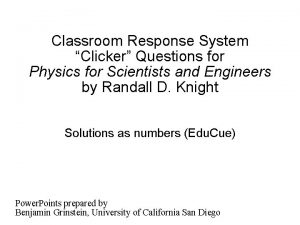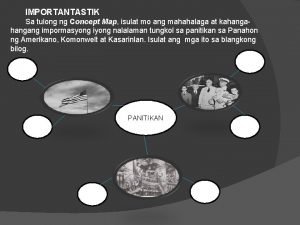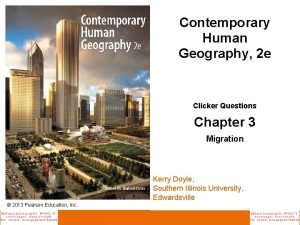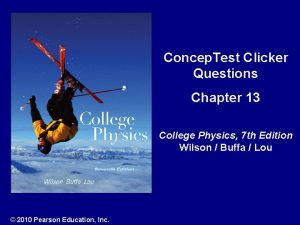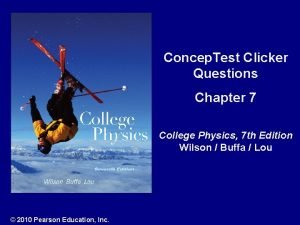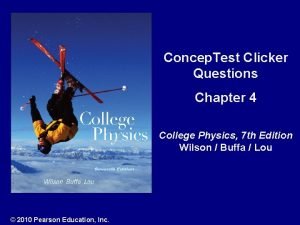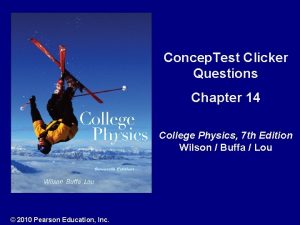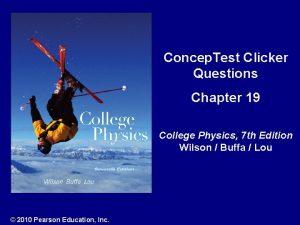Concep Test Clicker Questions Chapter 12 College Physics







- Slides: 7

Concep. Test Clicker Questions Chapter 12 College Physics, 7 th Edition Wilson / Buffa / Lou © 2010 Pearson Education, Inc.

Question 12. 1 A free expansion occurs when a valve is opened allowing a gas to expand into a bigger container. In such an expansion the temperature of the gas will: Free Expansion a) increase b) decrease c) stay the same

Question 12. 1 A free expansion occurs when a valve is opened allowing a gas to expand into a bigger container. In such an expansion the temperature of the gas will: Free Expansion a) increase b) decrease c) stay the same In such a process: W = 0 there is no object to move, Q = 0 there is no heat exchange, therefore U = 0 by the First Law of Thermodynamics. Thus, there is no change in the temperature. Free expansion is an irreversible process—the gas molecules have virtually no chance of returning to the original state. Free expansion is neither adiabatic nor isothermal expansion, even though T and Q are zero.

Question 12. 2 In the closed thermodynamic Work a) positive cycle shown in the P-V diagram, b) zero the work done by the gas is: c) negative P V

Question 12. 2 In the closed thermodynamic Work a) positive cycle shown in the P-V diagram, b) zero the work done by the gas is: c) negative The gas expands at a higher pressure and compresses at a lower pressure. In general, clockwise = positive work; P counterclockwise = negative work. V

Question 12. 3 The heat engine below is: Heat Engine a) a reversible (Carnot) heat engine b) an irreversible heat engine c) a hoax d) none of the above

Question 12. 3 The heat engine below is: Heat Engine a) a reversible (Carnot) heat engine b) an irreversible heat engine c) a hoax d) none of the above Carnot e = 1 − TC/TH = 1 − 270/600 = 0. 55. But by definition e = 1 − QL/QH = 1 − 4000/8000 = 0. 5, smaller than Carnot e, thus irreversible. Follow-up: What would you need to change to make it a Carnot engine?
